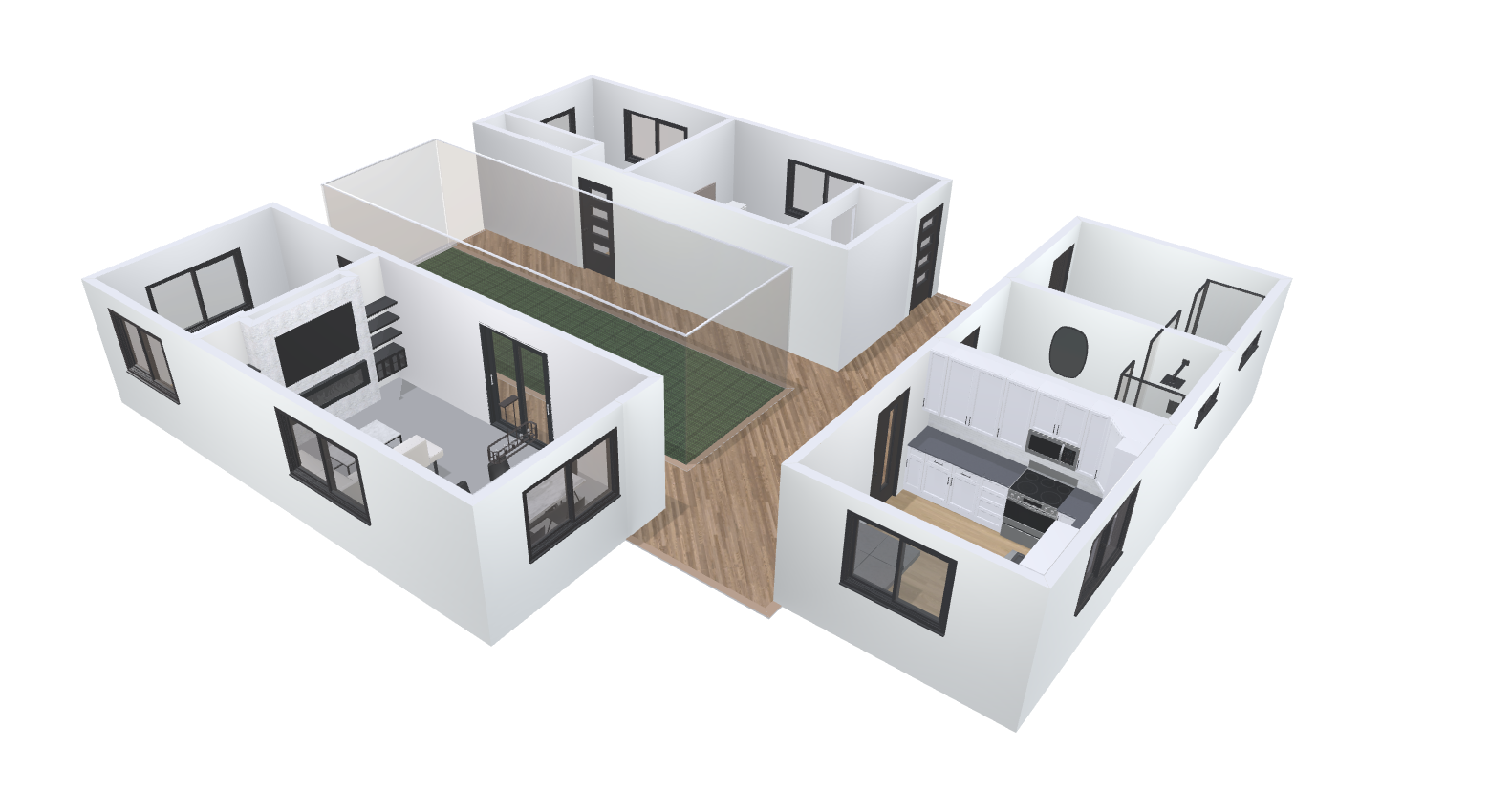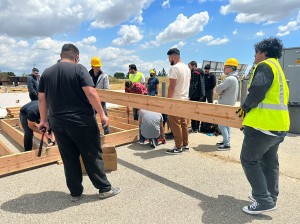CSUN Students Are Building and Designing a Sustainable Modular Home

A three-dimensional rendering of what the final product is supposed to look like. The sustainable and mobile three-piece design includes a kitchen, living-dining area, two bedrooms, and two bathrooms.
Worried for the future of the planet and applying what they’ve learned in the classroom, a team of California State University, Northridge mechanical engineering students have dedicated their senior design project to creating a sustainable housing unit, a home they plan to enter in the Orange County Sustainability Decathlon.
The 32 students, all from one mechanical engineering senior design class, call themselves the Solar and Wind Energy Engineering Team (S.W.E.E.T). It’s a name they took on because sustainable and energy efficient engineering is the focus of the course taught by Abhijit Mukherjee, a professor in CSUN’s Department of Mechanical Engineering.
Their goal is to place at the decathlon, which challenges college-based teams from around the world to design innovative homes of the future that are powered by renewable energy.

A group of senior mechanical engineering students on site as they begin building a frame for one of the three modules needed to complete their structure. Photo by Kaley Block
“It’s a competition, they’re looking for new ideas and that’s why we have the students,” said Mukherjee, faculty advisor for the project, with the assistance of mechanical engineering professor Vinicius Sauer.
“Students are always fresh, energetic, and motivated. In a way their energy motivates us,” Mukherjee said. “They’re likely to think outside the box and they’re always bringing innovative ideas to the table. As professors we can get stuck sometimes, maybe thinking a certain way, but a student could have a completely different perspective.”
The competition includes a two-year design and construction process. Winning entries are evaluated on 10 different criteria, including sustainability and resilience; architecture and interior design; engineering and construction; energy efficiency and innovation.
Once their renewable energy-powered house model is built, the CSUN team plans to transport and display it at the OC Fair & Event Center in Costa Mesa this October, when the final phase of the competition takes place.
“Everything around us was built and designed by engineers,” Mukherjee said. “A lot of students want a degree in mechanical engineering, and our department has a very strong undergraduate program. The senior design project is the last project requirement, in which students take all the theory and fundamentals they’ve learned during their time here and prepare themselves for work as an engineer.”
The S.W.E.E.T students have been working on a modular housing design that addresses the relevant housing and sustainability concerns of their target clientele. However, the students have not been given any specifications about who their client may be. Therefore the team – Mukherjee said – has been challenged with designing a versatile and mobile unit that abides by undetermined city codes.
To help them achieve their goal, the team has been making the most of the university’s partnerships with the Los Angeles Department of Water and Power and the design firm Gensler. The project also received financial support from alumni and other donors, CSUN’s Instructionally Related Activities funds and the $100,000 given to each participant of the OC Sustainability Decathlon.
Mukherjee explained that his goal as a professor is to help students understand and recognize the issues at hand when it comes to climate change, citing the facts and numbers that indicate the changes undergone by the global climate. He also hopes to help teach his students how to use their engineering skills to combat the harms being done by global warming.
“We’re training these students for the role they will play in the future,” he said. “I hope that the work of these students does not go unnoticed.”
The team will be working on their unit through the summer, and the model will be housed on the CSUN campus so students, faculty, staff and members of the community can see it before it heads to Orange County.
Those interested in supporting the project can visit the website https://engage.csun.edu/givenow.

 experience
experience